The potential difference between A and B is V. The values of some resistances are shown. The other resistance are equal in values. What should be the value of each of these resistances so that current in circuit is .
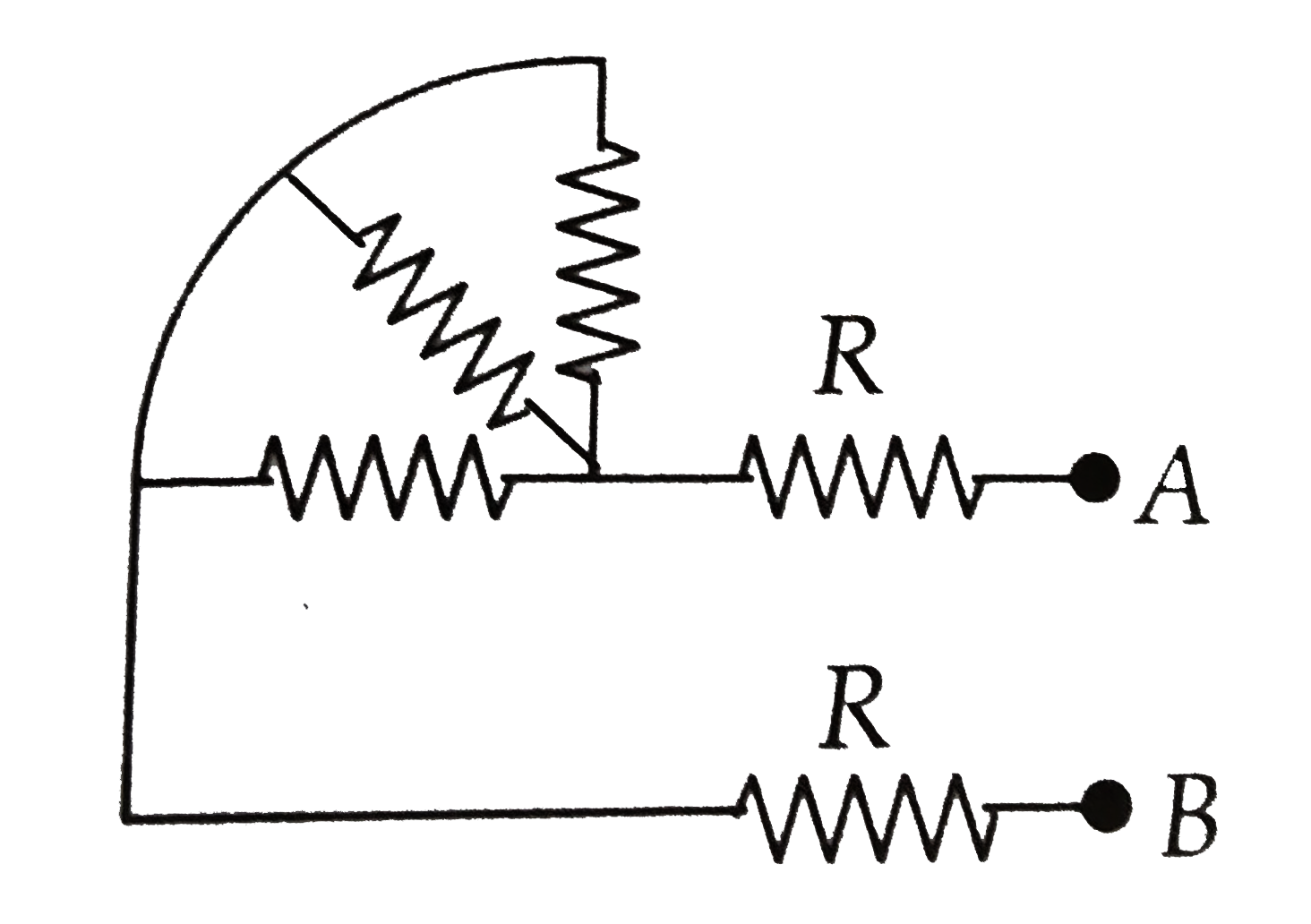
R
3R
The correct Answer is:D
d.
Hence equivalent resistance of three parallel resistances should
be
or
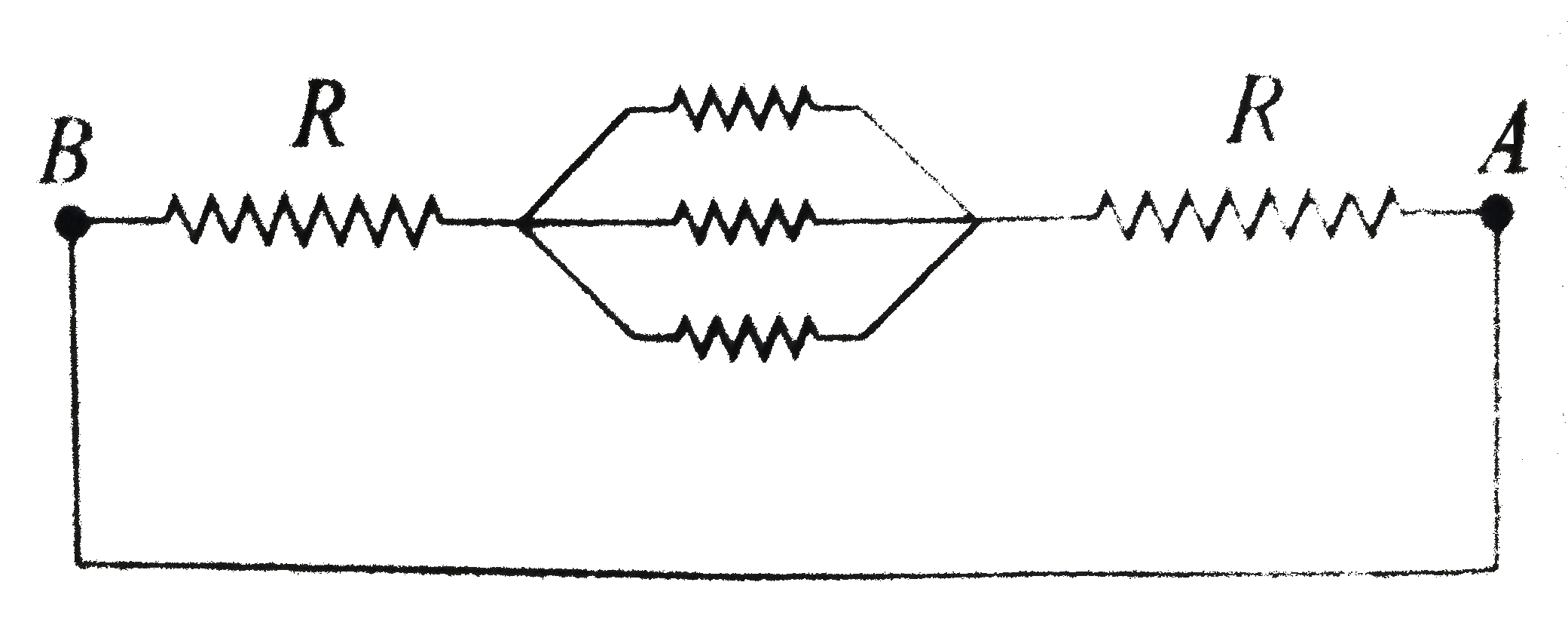
Similar Questions
What is the value of the resistance R1 in the following circuit ?
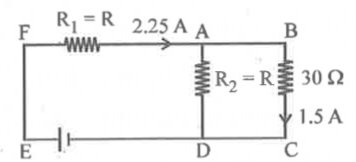 View Solution
View SolutionThe current I through a rod of a certain metallic oxide is given by I=0.2V5/2, where V is the potential difference across it. The rod is connected in series with a resistance to a 6V battery of negligible internal resistance. What value should the series resistance have so that:
(i) the current in the circuit is 0.44
(ii) the power dissipated in the rod is twice that dissipated in the resistance.View Solution
Knowledge Check
- Question 1 - Select One
If the potential difference between A and D is V, what will be potential difference between F and C. each of the resistance is R.
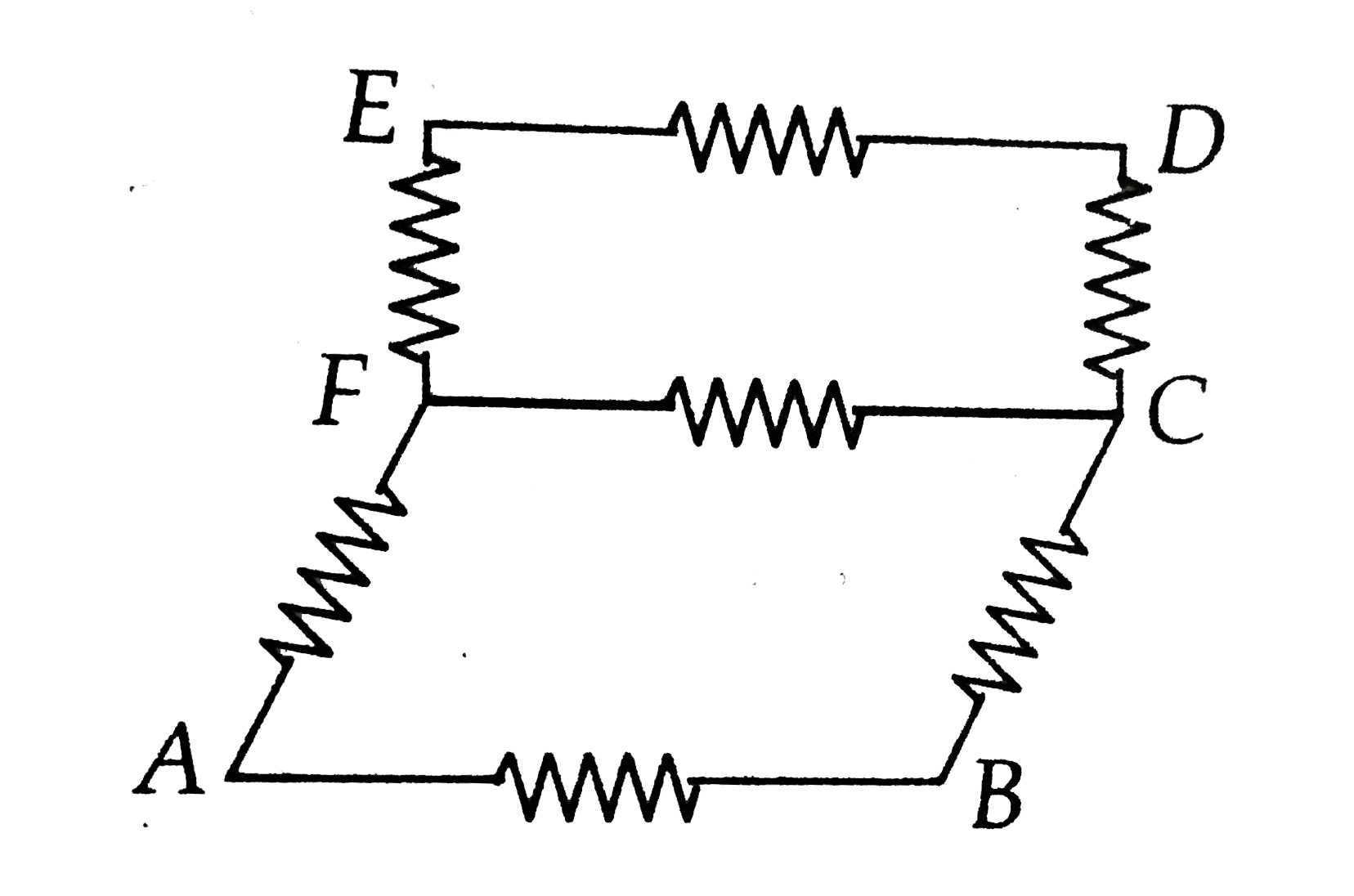 AV/3BV/4CV/6DV/8
AV/3BV/4CV/6DV/8 - Question 2 - Select One
The current enters at A and leaves at F. The values of some resistance are shown. What should be the value of resistance AB so that no current will flow through CB?
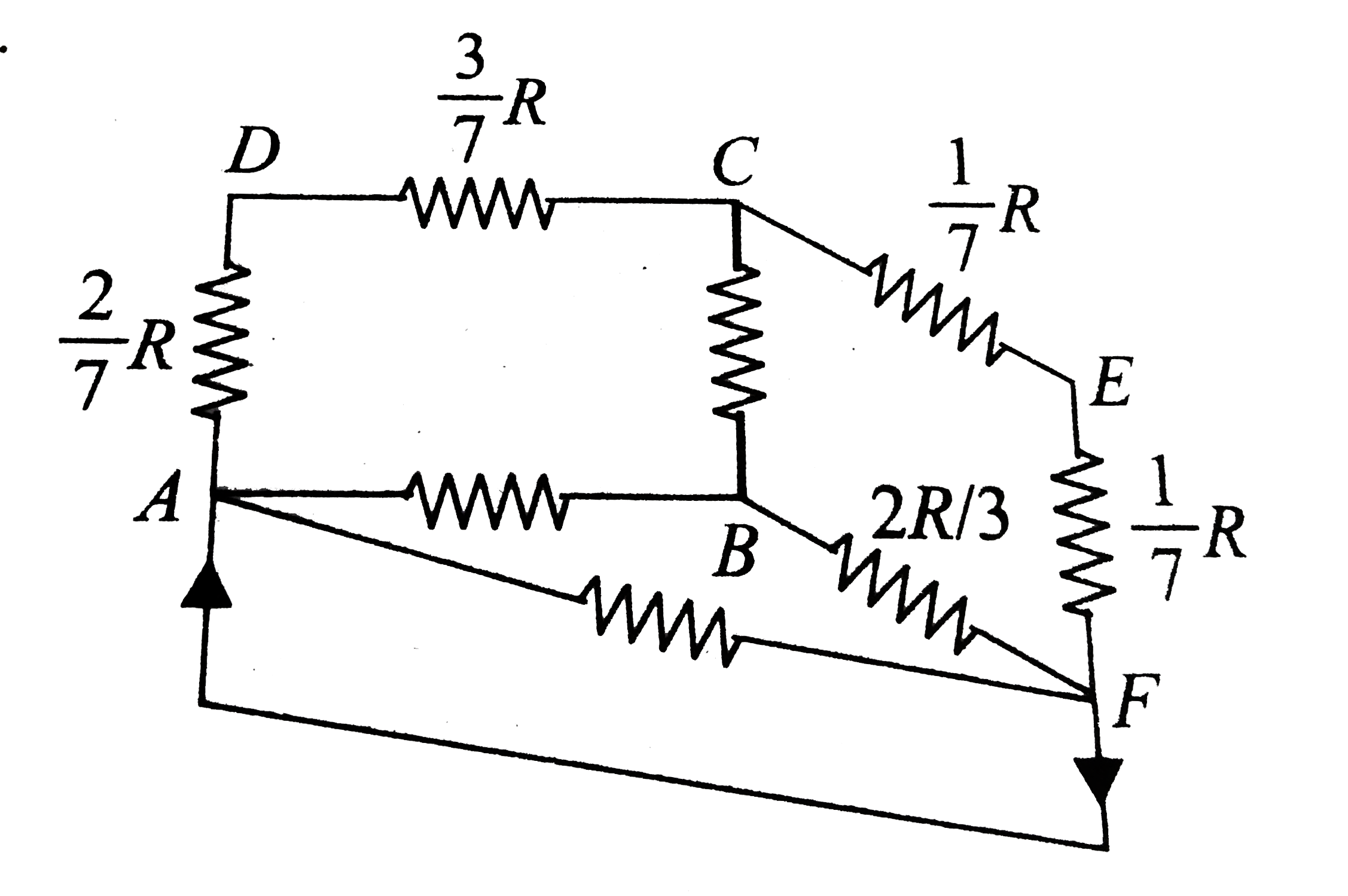 A(57)RBR3C(53)RD(59)R
A(57)RBR3C(53)RD(59)R - Question 3 - Select One
In the circuit shown in figure the total resistance between points A and B is R0. The value of resistance R is
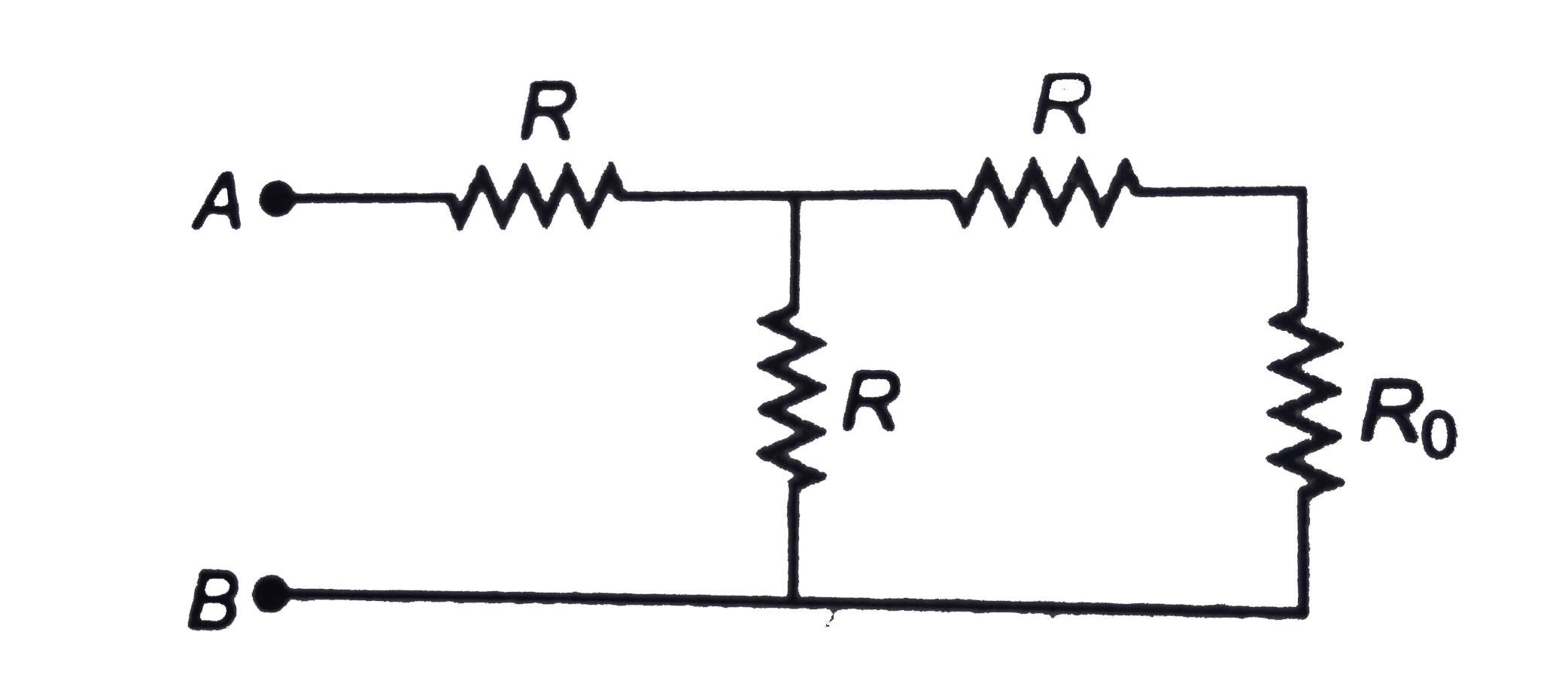 AR0B√3R0CR02DR0√3
AR0B√3R0CR02DR0√3
In the circuit shown in fig. some potential difference is applied between A and B. The equivalent resistance between A and B is R.
 View Solution
View SolutionThe circuit shown in the figure is a series LCR circuit connected to an AC source. This circuit has many important applications in practical electronic systems. In the given circuit, L=20mH and frequency of applied alternating potential difference is ω=8000rad/s. Initial phase of applied potential difference has such a minimum value that initial value of instantaneous potential difference is half of is peak value while initial phase of current in the circuit has such a minimum value that initial value of instantaneous current equals its peak value. We also observe that current in the circuit leads the net voltage across the circuit. It is given that peak values of potential difference across R and L are I VR(peak))=25V
V(L)peak=20V
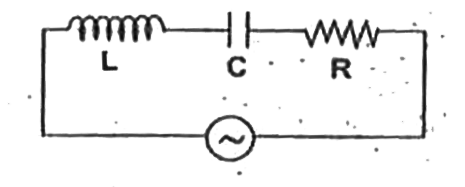
Impedance of the circuit isView SolutionThe circuit shown in the figure is a series LCR circuit connected to an AC source. This circuit has many important applications in practical electronic systems. In the given circuit, L=20mH and frequency of applied alternating potential difference is ω=8000rad/s. Initial phase of applied potential difference has such a minimum value that initial value of instantaneous potential difference is half of is peak value while initial phase of current in the circuit has such a minimum value that initial value of instantaneous current equals its peak value. We also observe that current in the circuit leads the net voltage across the circuit. It is given that peak values of potential difference across R and L are I VR(peak))=25V
V(L)peak=20V

Impedance of the circuit isView SolutionIn the given circuit, it is observed that the current I is independent of the value of the resistance R6. Then the resistance values must satisfy
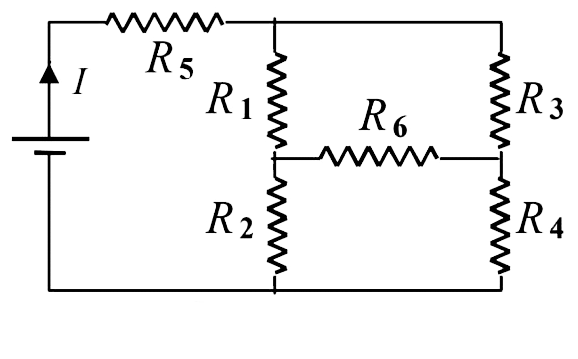 .View Solution
.View SolutionThe circuit shown in the figure is a series LCR circuit connected to an AC source. This circuit has many important applications in practical electronic systems. In the given circuit, L=20mH and frequency of applied alternating potential difference is ω=8000rad/s. Initial phase of applied potential difference has such a minimum value that initial value of instantaneous potential difference is half of is peak value while initial phase of current in the circuit has such a minimum value that initial value of instantaneous current equals its peak value. We also observe that current in the circuit leads the net voltage across the circuit. It is given that peak values of potential difference across R and L are I VR(peak))=25V
V(L)peak=20V

Impedance of the circuit isView Solution

